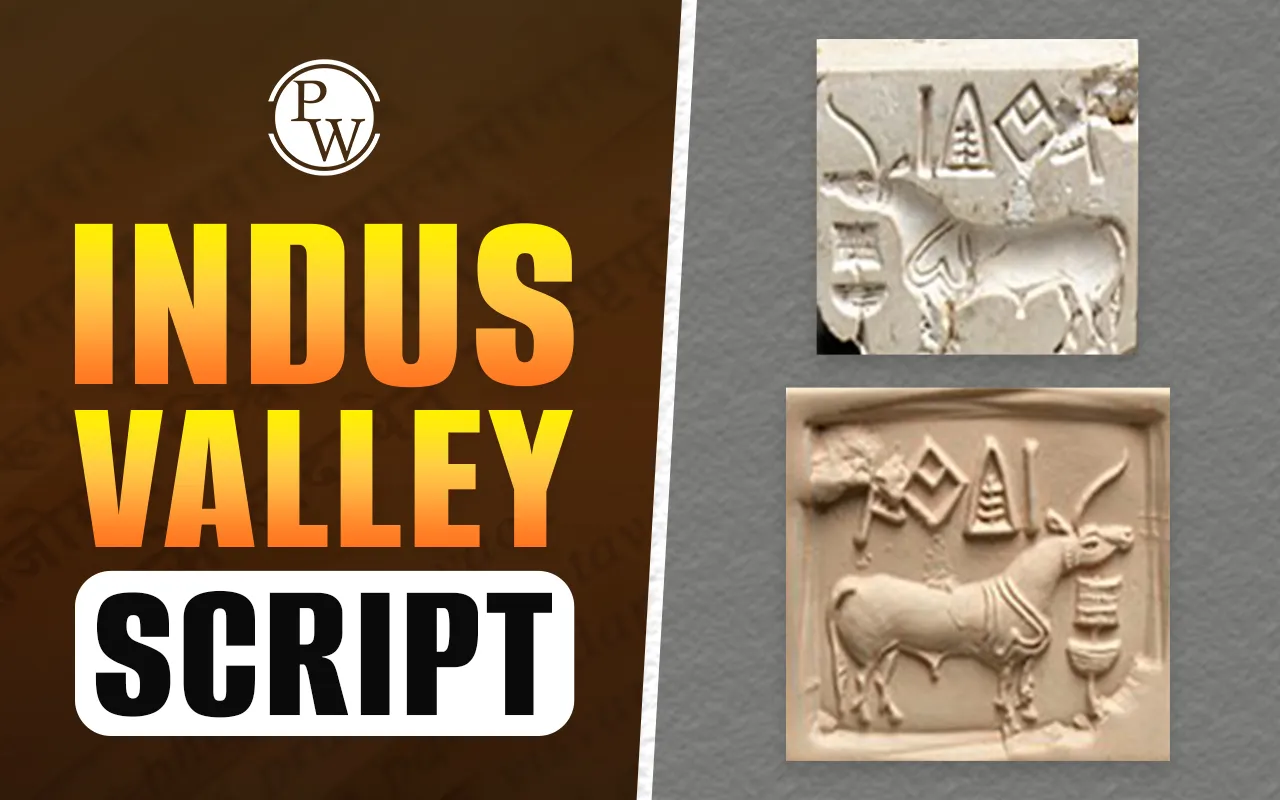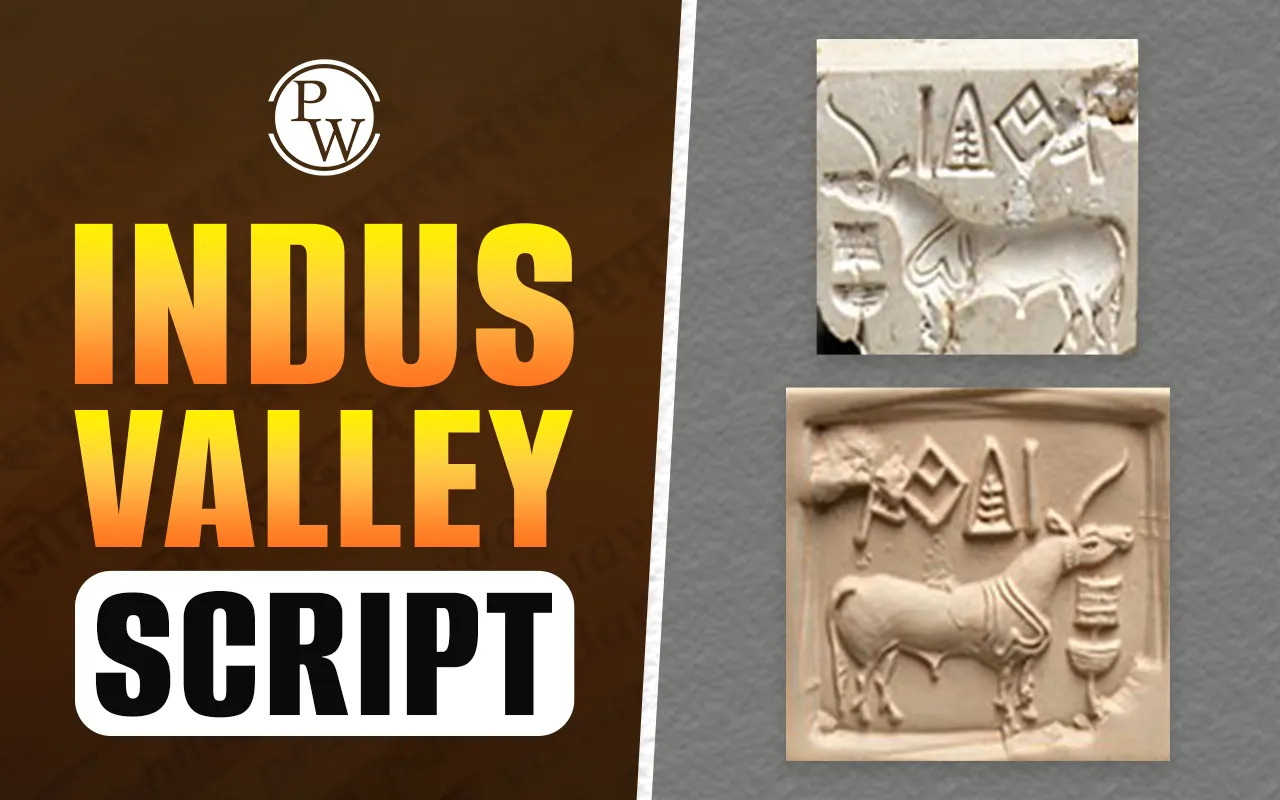

Indus Valley Script, also known as the Harappan script, remains undeciphered. It is a collection of over 400 pictographic and abstract symbols produced by the Indus Valley Civilization, which flourished around 2600 to 1900 BCE. Indus Valley Script is the earliest known writing system in the Indian subcontinent and appears mainly on seals, pottery, tablets, and other artifacts. To unravel its mystery, ASI will conduct an international conference in August 2025.
Latest News on Indus Valley Script
Archaeological Survey of India (ASI) has announced that it will host a three-day global conference titled "Decipherment of Indus Script: Current Status and Way Forward" from August 20 to 22, 2025, at the Pandit Deendayal Upadhyaya Institute of Archaeology in Greater Noida.
It aims to provide a platform for scholars, researchers, and enthusiasts to present their studies and claims regarding the Indus Valley script's decipherment. This initiative follows the announcement by Tamil Nadu Chief Minister M.K. Stalin in early 2025 of a $1 million prize for anyone who can successfully decode the Indus script.
The script, dating back over 4,000 years, remains undeciphered despite numerous attempts and theories linking it to Dravidian, Indo-Aryan, Brahmi, or even Sumerian languages.
What is Indus Valley Script?
The Indus Valley Script is the writing system used by the people of the Indus Valley Civilization, one of the world’s oldest urban cultures that flourished around 2600–1900 BCE in parts of present-day India and Pakistan. Cities like Harappa, Mohenjo-Daro, Dholavira, and Lothal were part of this advanced civilisation.
Indus Valley Script appears mainly on seals, pottery, tablets, and other artifacts, typically in very short inscriptions averaging about five signs, with none exceeding 26 characters. The script is largely pictorial, featuring human and animal symbols, and is believed to be logosyllabic, meaning its signs may represent objects, words, or sounds.
It was often written in boustrophedon style, where lines alternate direction from right to left and left to right. Despite many attempts, the script remains undeciphered, mainly due to the lack of bilingual texts and the short length of most inscriptions. Scholars across the world continue to study and debate its meaning.
Evolution of Indus Valley Script
The evolution of the Indus Valley Script spans from the Early Harappan period (circa 4000–2600 BCE) through the Mature Harappan phase (circa 2600–1900 BCE), reflecting the civilization’s growth in trade, urbanization, and administrative complexity. At first, symbols were found on pottery and tools.
As society became more organized, the script began to appear on seals, which were likely used in trade. These seals worked like ID cards or business logos, helping to identify merchants and their goods. Unlike later Indian scripts such as Brahmi or Devanagari, the Indus script did not evolve into a known successor.
Many experts believe it may have disappeared after the fall of the Harappan cities. Over the years, archaeologists have uncovered more than 4,000 inscriptions, each offering a small but valuable clue to understanding this ancient and still undeciphered script.
Indus Valley Script Style
The Indus Valley Script is characterized by largely pictorial signs depicting objects, animals, humans, and abstract symbols. It had over 400 to 676 distinct signs, suggesting it was likely logo-syllabic (signs represented words, sounds, or ideas). Some signs were made by combining simpler elements, while certain signs appeared only as part of larger symbols.
Key Features of Indus Valley Script
The Indus Valley Script stands out due to its unique structure and usage. Below are some key features:
-
Pictographic Nature: It uses pictures and symbols instead of letters.
-
Writing Direction: Often used boustrophedon stylem, writing alternated direction line by line.
-
Short Inscriptions: Most texts were brief, usually 5 characters long, with the longest being 26 characters.
-
No Rosetta Stone: There is no bilingual text to help decode it.
-
Found on Various Objects: Seals, pottery, copper tablets, ivory, and bone.
-
Repetition of Symbols: Some signs appear frequently, hinting at common usage.
-
Regional Variation: Minor stylistic differences are found across Harappan sites.
-
Non-Phonetic System: The script likely does not represent sounds like modern alphabets.
-
No Clear Evolution: Unlike other ancient scripts, it did not evolve into a known language.
These features show how advanced and complex the Indus Valley culture was. Yet, they also show the challenges in interpreting their script.
Why the Indus Script Remains Undeciphered?
The main reason the Indus Script remains undeciphered is the lack of context. No one knows the language the script was based on. Also, there is no bilingual inscription like the Rosetta Stone that helped decode Egyptian hieroglyphs. Some other reasons include:
-
Very Short Inscriptions: The average inscription is too brief to understand grammar or meaning.
-
No Clue About Sounds: It’s not known whether the signs stand for sounds, words, or ideas.
-
Unknown Language Base: Scholars don’t agree whether it was Dravidian, Proto-Munda, or something else.
-
No Historical Continuity: There’s no direct connection between this script and later Indian writing systems.
-
Symbolic or Non-Linguistic Use? Some experts think it might not be a true language at all, but a set of symbols.
Despite these challenges, efforts are ongoing worldwide to decode the script using modern technologies like AI, pattern recognition, and linguistic modelling.
Importance of the Indus Valley Script Language
The Indus script is a key to unlocking the social, political, and cultural life of the Harappan people. If deciphered, it could:
-
Reveal key details about the language, government, religion, and daily life of the Indus people.
-
Bridge the gap between the Indus Valley and later cultures like the Vedic, Mauryan, and Dravidian traditions.
-
May uncover records of trade, taxation, and weights, showing the Indus role in early global commerce.
-
Might hold clues to their urban planning, metallurgy, and water systems, revealing ancient innovations.
-
Advance the study of ancient writing systems, helping with other undeciphered scripts worldwide.
-
Strengthen India's cultural legacy on the global stage.
To sum up, the Indus Valley Script is one of history’s greatest puzzles, which reflects a highly organised and intelligent civilisation.
Want to understand more about ancient Indian history and prepare for UPSC? Explore PW's UPSC courses and get access to structured guidance for your journey!
Indus Valley Script FAQs
Which is the script of the Indus Valley Civilization?
Where is the Indus Valley Script found?
What type of script is the Indus Valley Script?
Is the Indus Valley script deciphered?
Why we can not read the Indus Script yet?

UPSC Coaching










